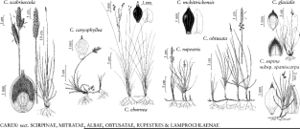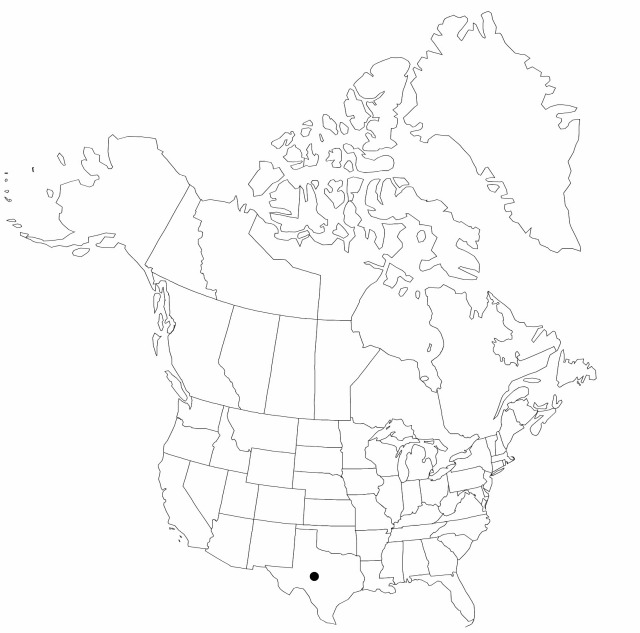Carex mckittrickensis
Novon 8: 221, fig. 2. 1998.
Culms 22–35 cm. Leaf blades involute, bristlelike, to 17 cm × 0.5–1 mm. Inflorescences: proximal bract sheaths 4–10 mm; pistillate spikes 6–7 × 1.5–2.3 mm; staminate spikes 4.5–7 × 0.7–0.9 mm. Scales: pistillate scales white-hyaline or pale brown with hyaline margins and green or brown midvein, oblong-ovate to broadly ovate, 2.1–3.5 × 0.9–1.4 mm, apex acute to subobtuse, slightly shorter than to about equaling perigynia; staminate scales white-hyaline, oblong-ovate, 3.5–6.5 × 0.8–1.8 mm, apex acute to subobtuse. Anthers 2–2.2 mm. Perigynia brown to black when fully mature, 2.2–2.9 × 0.9–1.1(–1.2) mm; beak 0.5–0.7 mm. Achenes broadly ellipsoid-obovoid, 1.6–1.9 × 0.8–1.1 mm.
Phenology: Fruiting summer.
Habitat: Seepage slope and alluvial terrace in deciduous forests
Elevation: 1800 m
Discussion
Of conservation concern.
Carex mckittrickensis is known only from McKittrick canyon in the Guadalupe mountains in western Texas; that station is over 1000 km from the nearest known locality of C. eburnea. Carex mckittrickensis is in some respects intermediate between C. eburnea and C. ussuriensis Komarov from northeastern Asia.
Selected References
None.

